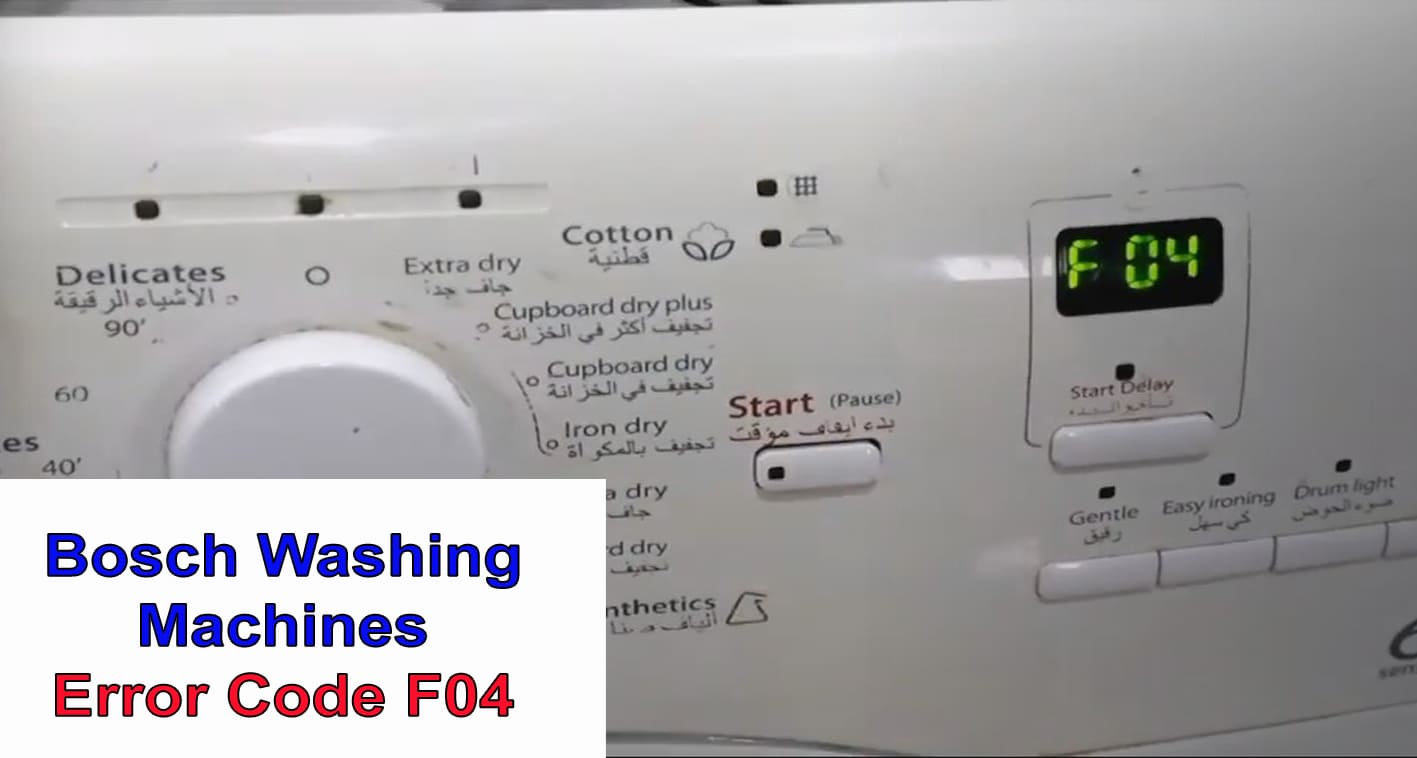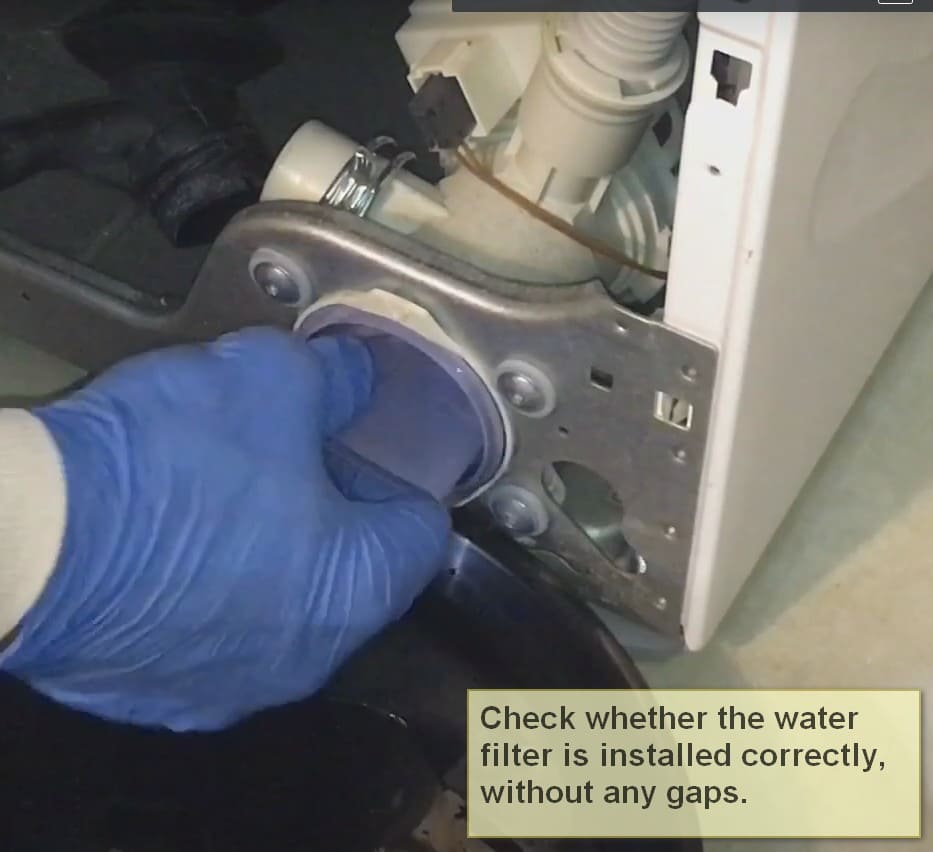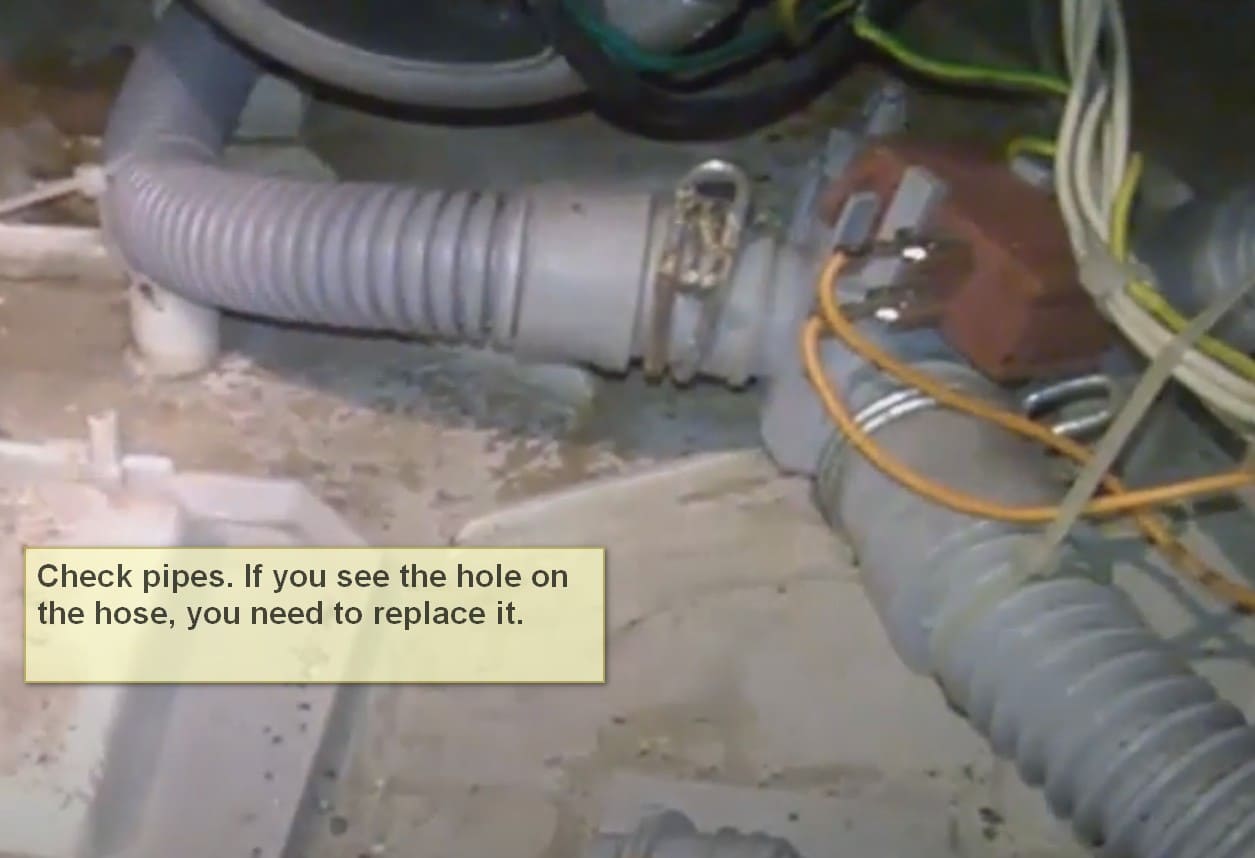There are situations when you can see the trouble in the operation of your Bosch washer even before you notice the error code on the screen. It will more likely be like that in case of the F04 error, which demonstrates the leakage. Usually, when this code occurs, a pretty large puddle of water will come off on the floor under your device.
What can cause the F04 error?
So what can be the reasons for the leak? There are several possible explanations, but the most common are the following:
- Sharp metal objects pierced the tank: bra bones, pins, needles, etc. An object falls between the drum and the wall of the tank, damaging it. There was no such problem when the devices were made of metal, but now, with plastic tanks, it’s getting a more and more widespread issue.
- The failure of the drain system. This may include the damage of the filler hosepipe and a clogged filter. There might also be a gap between the filter and the walls of the device, which could appear if you cleaned it recently and didn’t install properly.
- The clog of the detergent container. The leak can also be caused by any defects of the tray. You can easily check it, as with the cuvette issues you get much more foam in your drum during the cycle than usual.
- The malfunctioning of the hatch cuff. If it is worn out, it can’t make a realizable barrier for the water, and it starts seeping into the floor.
- The leakage can also be a cause if some factory defects, which can show up in time. There can be an issue with the tank itself, or with the pump.
How to fix the F04 error?
Now that you know what can provoke the leakage, it’s important to localize the danger and to fix it. For example, if water was flowing on the front wall of the appliance, the leak occurred in the cuvette area. If water flows down the back wall of the machine from above, you should look at the base of the filling hose closer to the device’s body.
If you can’t detect the leak visually, start checking every element, starting with the mesh-filter and the drain hosepipe. First of all, check whether the water filter is installed correctly, without any gaps.
Even if your appliance is brand new, the pipe could be damaged by the foreign object. So inspect it carefully from the inside and outside, and clean thoroughly in case of any clogs. If you see the hole on the hose, you need to replace it, as gluing is only a temporary solution.
To change the hose, detach it from three elements it is linked to — the tub, the drain system, and the pressure pipe. Put in the new hose, properly attaching it.
If the leak is on the from my panel of the appliance, there is an issue with the cuvette. The dispenser is always filled with soap, conditioner, and powder, which increases the risk of clogging. To check the condition of the cuvette pull it out till the end, press on the fixing component in the middle and take it out of the machine. Rinse it thoroughly.
Sometimes the reason can be in strong water pressure, so when entering the cuvette water damages it and the leak occurs. Just spin the feed tap to reduce the pressure. Try to start the new cycle and see whether the code is still on the display.
If the F04 error is still indicated, check the cuff. It will be pretty easy to notice if something is wrong with it. The hatch cuff can be simply worn out at damages by a low-quality powder and soap you use for washing. The foreign objects can also bring them to failure.
There is no other way to fix it, rather than replace it. And this is what you need to do:
- Open the door and pull the cuff back;
- Use a screwdriver to loosen the clamp, withdraw it;
- Now you can remove this part of the cuff, but mark its position by a pencil, it will help you while installing the new element;
- Find the second clamp and loosen it just like the first one;
- Remove the cuff and the clamp;
- Clean the tank and the place where the cuff was installed;
- Insert the new component and repeat all the steps in the reverse order.
Switch on the device and try to run a washing cycle. Hopefully, the error code is gone from the display, but if not — there is most likely a more serious problem, like a factory defect, so you’d better contact a specialist.



